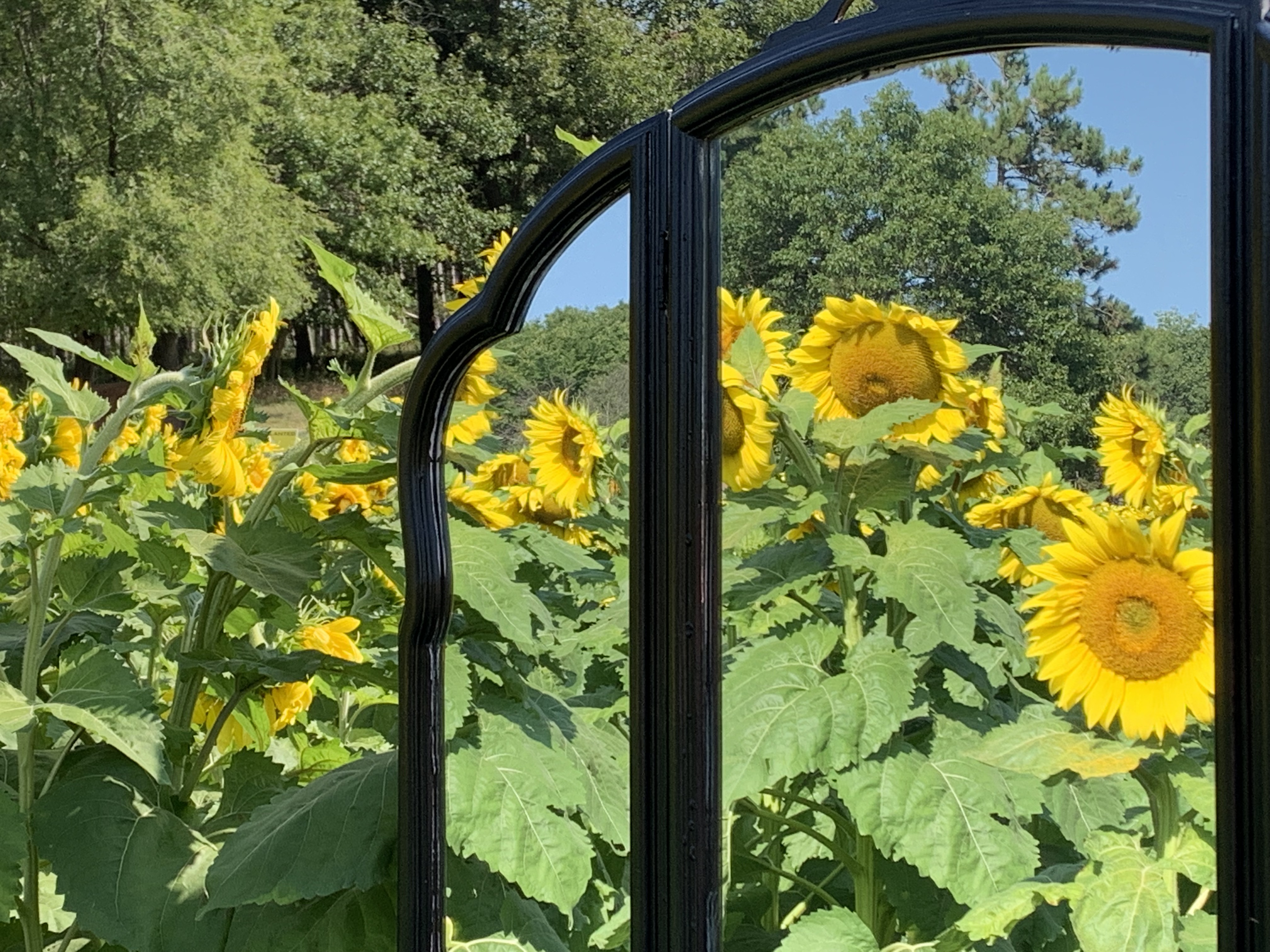
Frequent readers know how much I like to upcycle vintage sewing tables.
Featuring great bones, these tables can be upcycled into desks, storage, and accent tables. This one had such elegant lines that I decided it would make a great entry table. (See some of my other sewing table upcycles here: Upcycled Sewing Table: From Gutted to Glam and Vintage Sewing Table Upcycle: From Discard to Desk).

Step One: Prep
To be honest, I really hate prep. However, the washing, repair, and sanding is vital. If your surface isn’t clean and smooth, your paint won’t adhere properly and the finish will degrade over time. This piece looked fairly clean – but it clearly wasn’t!

Step Two: Deconstruction
However, I do like deconstruction! Especially when I’m envisioning a whole new use for an item. First, I gutted the old sewing machinery remnants and detached the section that flips out for the table extension. Then I popped off the top with the center hole for the machine. Finally, I screwed the solid wood extension piece in place as the new top.

I also removed the unnecessary hinges operating the front door panel. There was no storage behind the door, so the hinges were superfluous. Instead, I permanently affixed the door by screwing it to the table frame and used wood filler to disguise where the hinges had been.

Step Three: Repairs
Since the old two-part top was hinged, removing the hinges left gaps in the wood under the new top. I used Elmer’s Pro-Bond® wood filler to disguise the old hinge spaces. Once sanded and painted, these spots will be well-hidden. I also used wood filler to tidy up a few scratches and dings.

Step Four: Primer & Paint
Since this piece had a fairly slick surface, I knew I’d have to scuff-sand it to encourage the paint to adhere. Given the dark stain, I also knew I’d need to prime it well to avoid bleed-through since I was planning to use light-colored paint. Here it is after the first of two coats of BIN® shellac-based primer.
I was looking for a vintage white that would play well with the lemon theme I planned for the piece, so I went with Farmhouse® paint in “White Ash”. I decided to keep the original hardware because it had the right vibe for my plans, but I did prime and paint it to match.

Where are the lemons, you ask?
I’m a bit sour that the lemon transfers I ordered didn’t arrive in time. I’m afraid I have to keep you in suspense to see how this table turns out. But to sweeten the reveal, I’ll be showing you the transfer technique in detail in case you’d like to try it. So tune in next week for the tutorial and final reveal!
If you have any Qs about items on my blog, use my contact page, and follow me on Instagram (@serensipitysequelsmn).

